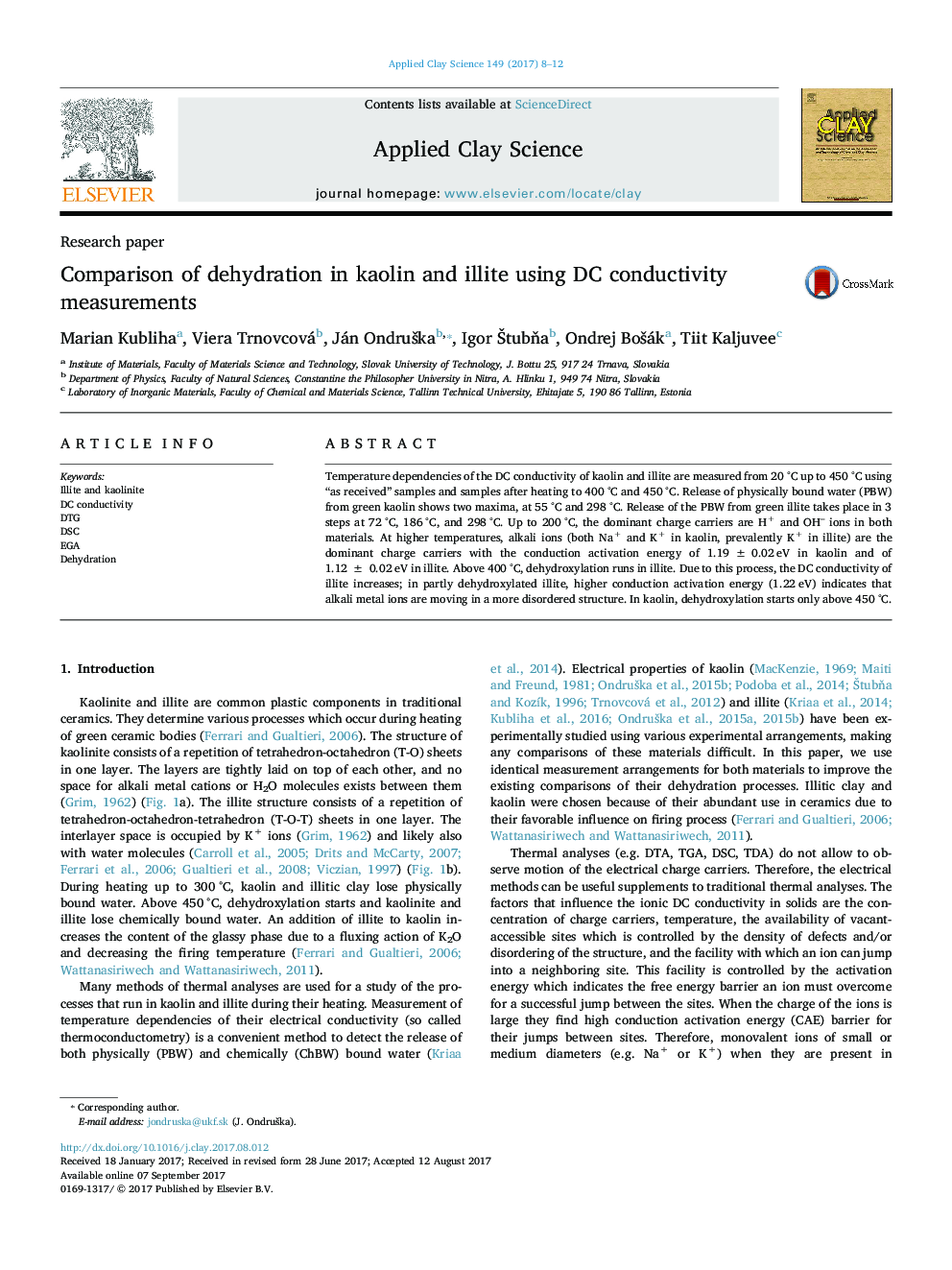| Article ID | Journal | Published Year | Pages | File Type |
|---|---|---|---|---|
| 5468662 | Applied Clay Science | 2017 | 5 Pages |
Abstract
Temperature dependencies of the DC conductivity of kaolin and illite are measured from 20 °C up to 450 °C using “as received” samples and samples after heating to 400 °C and 450 °C. Release of physically bound water (PBW) from green kaolin shows two maxima, at 55 °C and 298 °C. Release of the PBW from green illite takes place in 3 steps at 72 °C, 186 °C, and 298 °C. Up to 200 °C, the dominant charge carriers are H+ and OH- ions in both materials. At higher temperatures, alkali ions (both Na+ and K+ in kaolin, prevalently K+ in illite) are the dominant charge carriers with the conduction activation energy of 1.19 ± 0.02 eV in kaolin and of 1.12 ± 0.02 eV in illite. Above 400 °C, dehydroxylation runs in illite. Due to this process, the DC conductivity of illite increases; in partly dehydroxylated illite, higher conduction activation energy (1.22 eV) indicates that alkali metal ions are moving in a more disordered structure. In kaolin, dehydroxylation starts only above 450 °C.
Keywords
Related Topics
Physical Sciences and Engineering
Earth and Planetary Sciences
Geochemistry and Petrology
Authors
Marian Kubliha, Viera Trnovcová, Ján OndruÅ¡ka, Igor Å tubÅa, Ondrej BoÅ¡ák, Tiit Kaljuvee,
